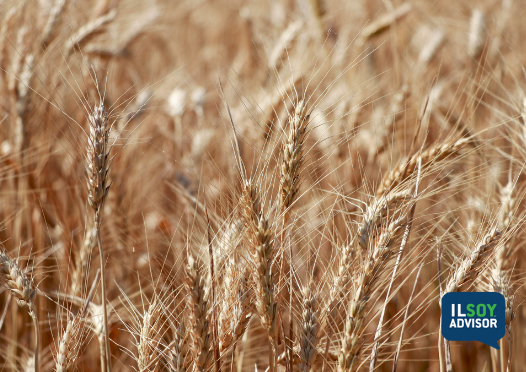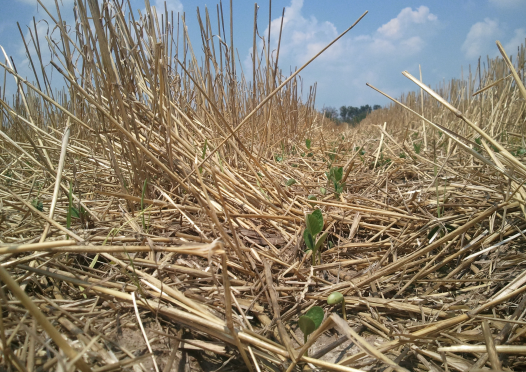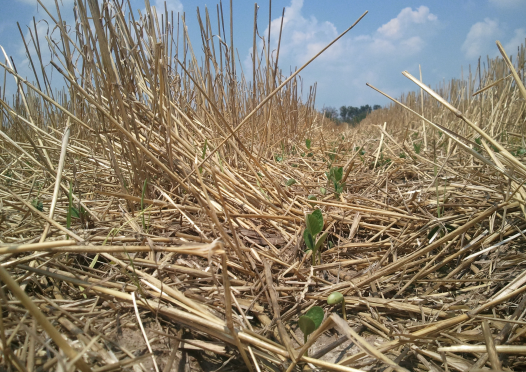ILSOYADVISOR POST
Agronomy: Flooding of Winter Wheat Fields
There has been some concern about the large amount of rainfall in southern Illinois, the subsequent flooding of many fields and the impact on the winter wheat crop. Before the water could completely leave some fields freezing temperatures arrived, causing sheets of ice to form and remain for a long time.
The initial concern is what impact the water and ice have on stands. That concern is magnified by the brownish or purple color of the wheat as result of the water and ice. An additional concern is what effect this might have on yields.
These color changes in flooded or ice-covered fields initially could be caused by the lack of oxygen. Some browning or yellowing could be freeze damage, as well resulting from the ice. The main concern about the flooding is its impact on the growing point of wheat, which is below ground until after tillering. The growing point is subject to water saturation or ice cover, which causes the amount of oxygen available to plant tissues below the surface of the soil to decrease.
At higher temperatures the rate of oxygen depletion is greater than at lower temperatures. During summer when air and soil temperatures are high, the oxygen level in flooded/saturated soil in a corn field reaches the point that is harmful to plant growth in as soon as 24 hours. Research suggests that most crop plants submerged for more than 5 to 7 days when temperatures are greater than 65⁰ F will die, and that yield can be impacted by flooding after as few as 48 hours.
Dormancy of wheat reduces the need for oxygen, but does not eliminate it. The “warm” December and early January we had meant in many cases the wheat crop was not dormant when the wet weather and flooding began. Considering these extreme conditions, it seems reasonable that some stand loss is expected in the areas where water saturation or ice sheeting has remained for long periods.
That being said, don’t write off a winter wheat crop that has been flooded or ice covered. Wheat is a very resilient crop. If you can’t wait until green up, evaluate stands now by digging up some plants from the affected areas and bringing them inside to warm up and grow. Observe how they green up. Ideally, it would be better to wait until later, closer to spring when the plants break dormancy, to evaluate a stand and make decisions then.
We still have a few months of possible wet/snowy/cold weather to contend with. Pushing the panic button now is not necessary and may lead to false conclusions as to the condition and yield prospects of the wheat crop. The cosmetic appearance of wheat at this time of year has little to do with its yield potential.
Kelly is serving as the Illinois Soybean Association Double-Crop Specialist. He was raised on the family farm in Benton, Illinois and graduated from Southern Illinois University (SIU)-Carbondale with a BS in Agriculture Education and Mechanization, and a Master’s of Science (MS) in Plant and Soil Science. Kelly has spent 25 years as a soil fertility agronomist and precision agriculture consultant in southern Illinois while also spending 4 years as a Farm/Agronomy Manager and GIS Coordinator for a large farm in southeastern Illinois. He is a Certified Professional Agronomist and a Certified Crop Advisor.





Comments
Add new comment